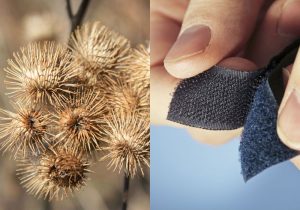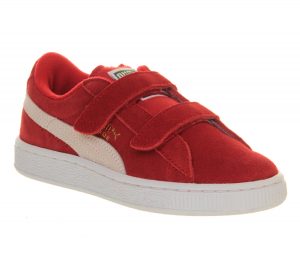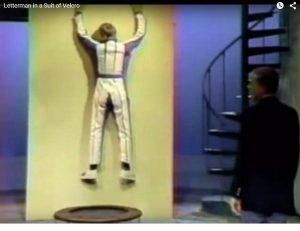From Biomimicry to Metonymy via Portmanteau – a vocabulary lesson that doubles as story of innovation

Georges de Mestral, a Swiss engineer, used to take his dog with him when he went out hunting in Alps. After these days out he would often have to spend some time pulling off the burrs that clung to his trousers and his dogs’ fur.
He was curious to understand how and why this happened, so he took one of the burdock burrs and out it under a microscope. He could now see the hundreds of tiny “hooks” that caught on anything with a loop, such as clothing, animal fur, or hair and he started to wonder if he could somehow turn this natural phenomena into something useful.
Luckily de Mestral was patient man because he took him nearly eight years of trying before he could successfully reproduced a form of natural attachment system. He used two strips of fabric, one with thousands of tiny hooks and another with thousands of tiny loops. It was to become one of the most famous examples of what is called biomimicry – an invention inspired by nature
Over the long period of experimentation he had plenty of time to think about how it could be used and identified its potential to fasten things together, to do things up but which could then be un-done. It was an idea that would be described as ‘The zipper-less zipper.’ He also decided on a name for his new product, like the product itself he chose something that had two separate elements which when combined created something new. He chose a portmanteau word, comprising the words “velvet” and “crochet” and created Velcro.

He formally patented it his invention in 1955.
The first Velcro was made out of cotton but de Mestral soon discovered that nylon worked better because it didn’t wear with use.
Sales of Velcro took off, or rather blasted off when in the early 1960s the Apollo astronauts started using it to secure pens, food packets and equipment they didn’t want floating away.
The resulting PR encouraged all sorts of other applications – Hospitals used it on the straps of blood pressure gauges and on patient gowns. It was used in trains, planes and automobiles as fasteners for floor mats, slipcovers, seat cushions. In 1968, Puma became the first major shoe company to offer a sneaker with Velcro fasteners.

In 1984, David Letterman interviewed Velcro USA’s director of industrial sales while wearing a Velcro suit. When the interview was over, he launched himself via trampoline onto a Velcro wall. Another new use for Velcro was created – outfits for “human fly” contests.

By the late 1980s, Velcro original patent had expired and companies in Europe, Mexico and Asia started making their own versions of the product and while there is only one brand that is legally allowed to call itself Velcro, many of the others are often referred to as Velcro.

Velcro had joined that select band of metonymy brands where their name is, in common parlance, used to refer to an entire category of product. Others include Ziploc, Sellotape and Guinness.
So now you know how Velcro began and may have had your vocabulary increased too!